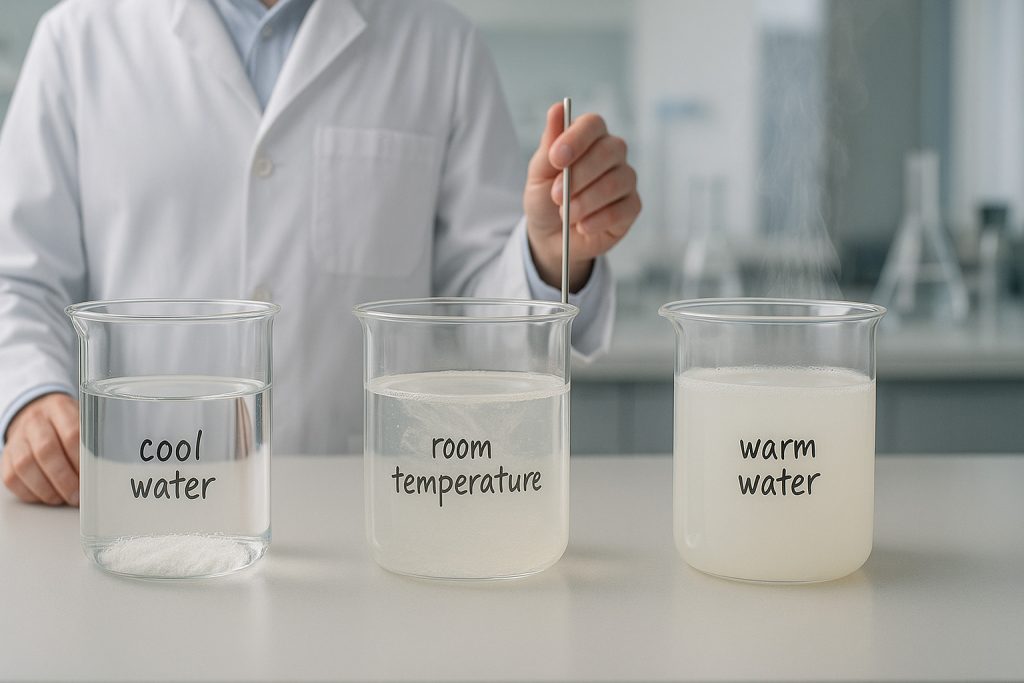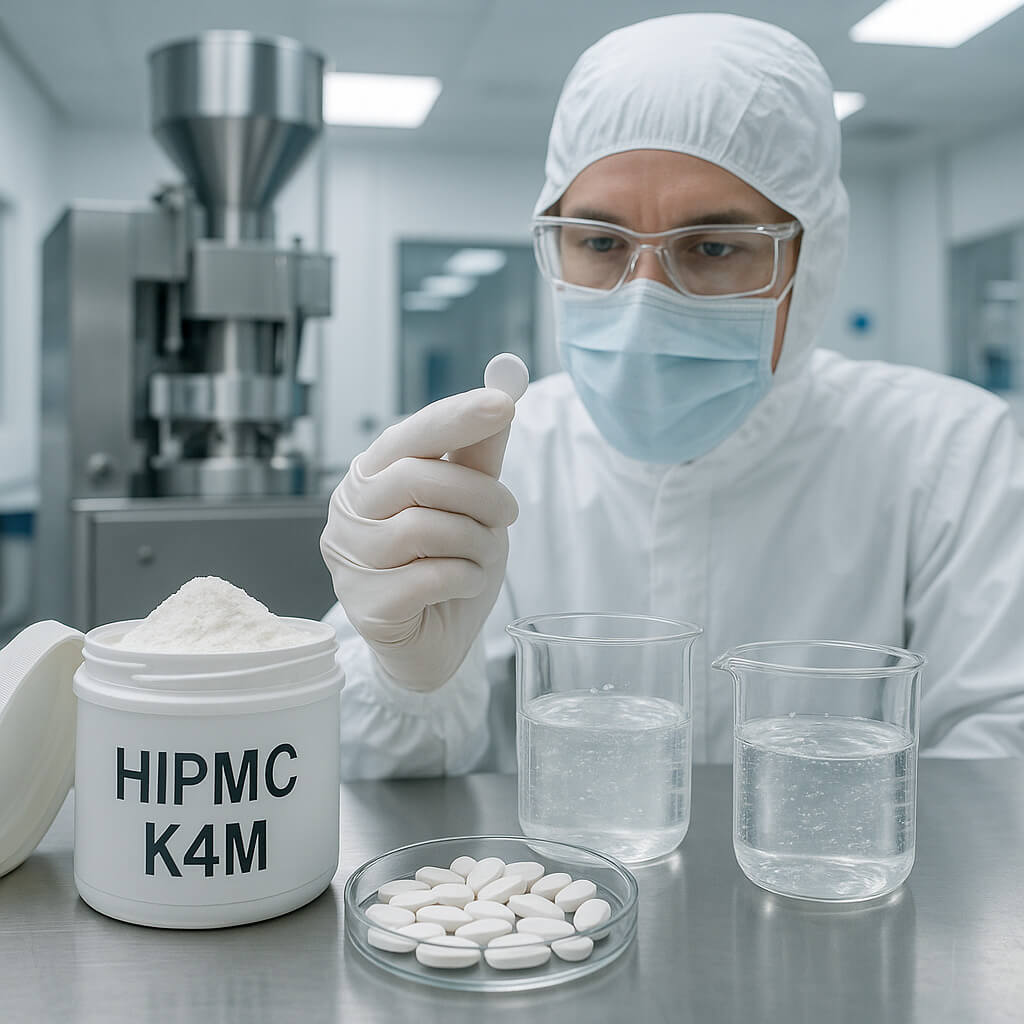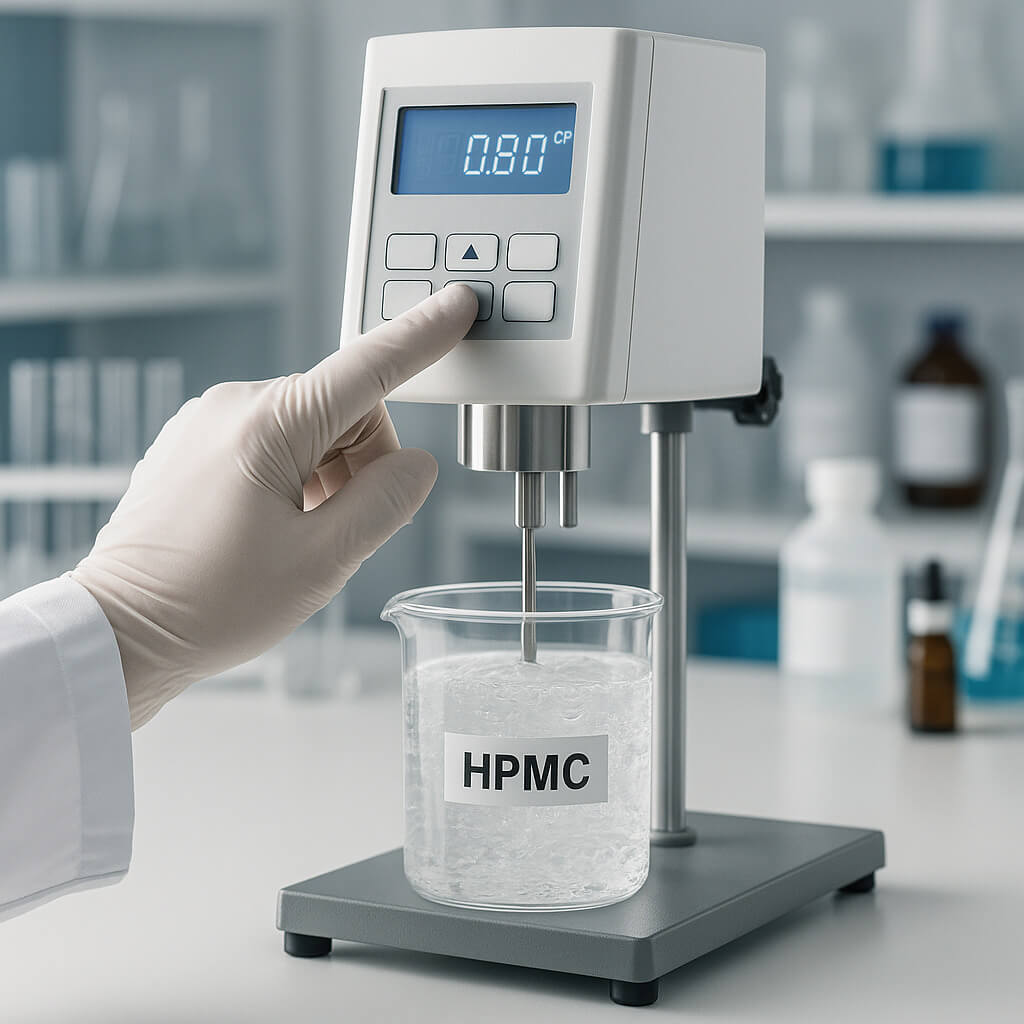La hidroxipropilmetilcelulosa (HPMC) es un polímero versátil y ampliamente utilizado en diversas industrias. Posee excelentes propiedades de solubilidad, lo que la convierte en una opción popular en la producción de materiales de construcción, productos farmacéuticos y alimenticios. Las propiedades de solubilidad de la HPMC pueden afectar significativamente el rendimiento del producto final. Comprender estas propiedades es crucial para lograr resultados óptimos en las formulaciones y garantizar una calidad constante del producto. En este artículo, exploraremos las propiedades de solubilidad de la HPMC, su impacto en diferentes aplicaciones y los métodos para lograr una disolución óptima.

1. ¿Qué es HPMC y por qué son importantes sus propiedades de solubilidad?
El HPMC, un derivado de la celulosa, es un polímero soluble en agua que se utiliza comúnmente como aglutinante, espesante, emulsionante y estabilizador. Sus propiedades de solubilidad son esenciales para su funcionalidad en diversas industrias. En la construcción, el HPMC se utiliza para mejorar la trabajabilidad y la adhesión de morteros y adhesivos. En la industria farmacéutica, actúa como aglutinante para comprimidos y ayuda a controlar la liberación de principios activos. En la industria alimentaria, se utiliza como emulsionante y estabilizador para mejorar la textura y la consistencia en productos como salsas y aderezos.
La solubilidad del HPMC determina su eficacia en la disolución en agua, lo que influye directamente en su rendimiento. Un polímero con buena disolución en agua puede proporcionar la viscosidad y la textura deseadas para diversas aplicaciones. Por otro lado, una disolución incompleta puede provocar aglutinación, viscosidad irregular y una mala calidad del producto. Por ejemplo, si el HPMC no se disuelve completamente en una mezcla de mortero, podría resultar en una trabajabilidad inconsistente y una adhesión deficiente. De igual manera, en los comprimidos farmacéuticos, una disolución inadecuada puede provocar una liberación irregular del fármaco, lo que podría afectar el efecto terapéutico.
Por lo tanto, las propiedades de solubilidad del HPMC juegan un papel crucial para garantizar la uniformidad, la consistencia y el rendimiento del producto final.
| Industria | Usos comunes | Importancia de la solubilidad |
|---|---|---|
| Construcción | Morteros, adhesivos | Afecta la trabajabilidad y la adhesión. |
| Productos farmacéuticos | Aglutinante para comprimidos, liberación controlada | Afecta las tasas de liberación de fármacos |
| Alimento | Emulsionante, estabilizador | Mejora la textura y la consistencia. |
2. ¿Cómo afectan las propiedades de solubilidad del HPMC al rendimiento del producto?
Las propiedades de solubilidad del HPMC tienen un impacto directo en la calidad y el rendimiento del producto final. Para aplicaciones de construcción, la solubilidad del HPMC determina la viscosidad y la consistencia de las mezclas de mortero o adhesivo.Si el HPMC se disuelve uniformemente, se crea una pasta suave y maleable que se extiende fácilmente y se adhiere bien. Sin embargo, si el HPMC no se disuelve correctamente, puede resultar en una mezcla irregular, lo que puede afectar la aplicación del producto. La calidad de la unión y la fuerza de adhesión también pueden verse afectadas, lo que reduce la eficacia del producto.
En productos farmacéuticos, la solubilidad de HPMC es fundamental para la liberación controlada de fármacosLa HPMC se utiliza comúnmente como aglutinante en comprimidos, y su solubilidad determina cómo se descompondrá el comprimido y liberará sus principios activos. Si la HPMC no se disuelve uniformemente, la liberación del fármaco puede ser irregular, lo que puede provocar fallos terapéuticos. Por ejemplo, en formulaciones de liberación controlada, una disolución incompleta podría provocar una liberación del fármaco demasiado rápida o demasiado lenta, lo que puede tener graves consecuencias para la salud del paciente.
En la industria alimentaria, La solubilidad de HPMC juega un papel clave en la estabilización de emulsiones.Por ejemplo, en salsas y aderezos, la correcta disolución del HPMC garantiza una textura suave y consistente. Una correcta disolución del HPMC ayuda a mantener la dispersión uniforme de los ingredientes y evita su separación. Por el contrario, una baja solubilidad puede dar lugar a productos grumosos o acuosos, lo que puede afectar la satisfacción del consumidor y la vida útil del producto.
El impacto de la solubilidad del HPMC en el rendimiento del producto es innegable. Afecta todos los aspectos, desde la textura y la viscosidad hasta la estabilidad y la velocidad de liberación. Garantizar una correcta disolución del HPMC es esencial para lograr la calidad y consistencia deseadas en el producto final.
| Solicitud | Efecto de la baja solubilidad | Solución |
|---|---|---|
| Construcción | Viscosidad desigual, mala adherencia. | Asegúrese de una disolución uniforme para una trabajabilidad consistente. |
| Productos farmacéuticos | Liberación inconsistente de fármacos | Controle la velocidad de disolución para una liberación confiable |
| Alimento | Textura grumosa, separación. | Disolución gradual para emulsiones estables |
3. ¿Cuáles son los factores clave que afectan la solubilidad de HPMC?
Varios factores influyen en la solubilidad de HPMC. La temperatura es uno de los factores más importantesEl HPMC se disuelve más rápidamente a temperaturas más altas, pero el calor excesivo puede degradar el polímero. El rango de temperatura ideal para disolver el HPMC suele estar entre 60 °C y 80 °C. Si la temperatura excede este rango, el polímero puede romperse., lo que reduce la solubilidad y la eficacia de las aplicaciones. Por otro lado, una temperatura demasiado baja puede ralentizar el proceso de disolución, lo que resulta en una solubilidad incompleta.
Otro factor importante es la relación agua-HPMCLa concentración de HPMC en la solución afecta su solubilidad. Si hay demasiado HPMC y poca agua, el polímero podría no disolverse completamente, lo que provocaría aglutinación o una solución de alta viscosidad. Por el contrario, una cantidad insuficiente de HPMC resultará en una solución diluida y menos efectiva. Lograr el equilibrio adecuado es esencial para garantizar una disolución adecuada y mantener la viscosidad deseada.
La velocidad de agitación también juega un papel crucial para lograr una solubilidad óptima.Agitar demasiado rápido puede introducir aire en la solución, lo que produce burbujas y una mezcla inconsistente. Agitar demasiado lento puede provocar una disolución incompleta del polímero. Lo mejor es agitar a una velocidad moderada y constante para asegurar una hidratación y disolución uniformes del HPMC.
Al controlar cuidadosamente estos factores, puede garantizar la disolución adecuada de HPMC y lograr el rendimiento deseado en sus aplicaciones.
| Factor | Impacto en la solubilidad | Práctica recomendada |
|---|---|---|
| Temperatura | Disolución más rápida a temperaturas más altas, pero el calor excesivo puede degradar el HPMC. | Mantener la temperatura entre 60°C y 80°C |
| Relación agua-HPMC | Demasiado HPMC puede causar aglutinación, muy poco afecta la viscosidad. | Utilice una proporción adecuada para una disolución efectiva. |
| Velocidad de agitación | La agitación rápida puede introducir burbujas de aire, la agitación lenta puede provocar una disolución incompleta. | Revuelva a velocidad moderada para obtener resultados óptimos. |
4. ¿Cómo utilizan las diferentes industrias las propiedades de solubilidad del HPMC?
Las propiedades de solubilidad del HPMC varían según la industria y la aplicación. En productos farmacéuticos, el HPMC se utiliza como aglutinante en formulaciones de comprimidos.Sus propiedades de solubilidad son esenciales para controlar la liberación de los principios activos. En el caso de los comprimidos de liberación controlada, la HPMC debe disolverse lenta y uniformemente para garantizar una liberación constante del fármaco a lo largo del tiempo. La solubilidad juega un papel fundamental en la eficiencia y eficacia de estas formulaciones., ya que una disolución inconsistente puede provocar una liberación impredecible del fármaco y posibles riesgos para la salud.
En el industria alimentariaEl HPMC se utiliza principalmente como emulsionante y estabilizador. Su solubilidad ayuda a mantener la textura y consistencia de productos como salsas, aderezos y helados.La correcta disolución del HPMC garantiza que los ingredientes se dispersen uniformemente, evitando la separación o la aglomeración. Esto es especialmente importante en productos alimenticios que se almacenan durante largos periodos, ya que una baja solubilidad puede reducir la vida útil y la calidad general del producto.
En construcciónSe agrega HPMC a morteros, yesos y adhesivos para baldosas para mejorar la trabajabilidad y la adhesión. Su solubilidad afecta la suavidad y consistencia de la mezcla.Cuando se disuelve adecuadamente, el HPMC mejora la facilidad de aplicación y garantiza una textura consistente. Una disolución inadecuada puede provocar una mala adhesión, dificultad para esparcirlo y un rendimiento inconsistente del material de construcción..
Cada industria aprovecha la solubilidad del HPMC para satisfacer sus necesidades específicas. Ya sea para controlar la liberación de fármacos en productos farmacéuticos, estabilizar emulsiones en alimentos o mejorar la trabajabilidad en la construcción, las propiedades de solubilidad del HPMC son esenciales para lograr resultados óptimos.
| Industria | Solicitud | Papel de la solubilidad |
|---|---|---|
| Productos farmacéuticos | Aglutinante para comprimidos, liberación controlada | Garantiza la liberación constante del fármaco y la integridad del comprimido. |
| Alimento | Emulsionante, estabilizador | Mantiene la textura y evita la separación. |
| Construcción | Morteros, adhesivos | Mejora la trabajabilidad, asegura la consistencia. |
5. ¿Qué métodos se pueden utilizar para lograr una solubilidad óptima de HPMC?
Para lograr una solubilidad óptima de HPMC se requiere el método adecuado para la aplicación específica. Disolución en agua caliente Es uno de los métodos más comunes para disolver HPMC rápidamente. Este método consiste en calentar agua a temperaturas entre 60 °C y 80 °C y añadir HPMC gradualmente mientras se agita. El calor ayuda a romper las cadenas de polímero, facilitando la disolución del HPMC. Este método es especialmente útil en aplicaciones que requieren alta viscosidad, como productos farmacéuticos y de construcción..
Para formulaciones más delicadas, disolución en agua fría puede ser utilizado En este método, se agrega HPMC gradualmente al agua a temperatura ambiente y se agita lentamente. Para evitar la formación de grumos. La disolución en agua fría se utiliza habitualmente en la industria alimentaria, donde se requiere una textura más suave y consistente. Este método puede tardar más, pero garantiza que el HPMC se disperse uniformemente sin sobrecalentarse..
Para aplicaciones industriales a gran escala, agitación continua Se utiliza a menudo para garantizar que el HPMC se disuelva uniformemente. Equipos especializados, como mezcladores o licuadoras industriales, ayudan a mantener una velocidad y temperatura de agitación constantes, garantizando así una disolución uniforme del HPMC en grandes volúmenes. Este método es ideal para aplicaciones que requieren una gran cantidad de HPMC disuelto..
Al utilizar el método de disolución adecuado para su aplicación, puede lograr una solubilidad óptima y garantizar el rendimiento deseado del producto.
| Método | Temperatura | Aplicaciones |
|---|---|---|
| Disolución en agua caliente | 60°C a 80°C | Productos farmacéuticos, construcción |
| Disolución en agua fría | Temperatura ambiente | Alimentos, formulaciones delicadas |
| Agitación continua | Varía | Producción industrial a gran escala |
6. ¿Cómo se puede controlar la viscosidad a través de la solubilidad de HPMC?
El control de la viscosidad es esencial al disolver HPMC, especialmente en industrias donde se requieren textura y consistencia específicas. La solubilidad de HPMC influye directamente en la viscosidad de la solución.Concentraciones más altas de HPMC dan como resultado soluciones más espesas, mientras que concentraciones más bajas producen soluciones más líquidas. Ajustando el relación agua-HPMC Es una de las maneras más sencillas de controlar la viscosidad. Una mayor proporción de agua resultará en una menor viscosidad, mientras que una mayor cantidad de HPMC aumentará la viscosidad de la solución.
La temperatura también juega un papel fundamental en el control de la viscosidad.A medida que aumenta la temperatura del agua, la viscosidad de la solución disminuye, lo que facilita alcanzar la consistencia deseada. Sin embargo, la temperatura no debe superar los 80 °C, ya que esto puede degradar el polímero y reducir su eficacia. Mantener la temperatura dentro del rango ideal garantiza que la solución se mantenga consistente y estable.
La velocidad de agitación es otro factor que afecta la viscosidad. Las velocidades de agitación más rápidas tienden a reducir la viscosidad., mientras que velocidades de agitación más lentas pueden aumentarla. Para obtener resultados consistentes, es importante mantener velocidades de agitación moderadas para evitar la introducción de burbujas de aire..
| Factor | Impacto en la viscosidad | Solución |
|---|---|---|
| Relación agua-HPMC | Una mayor concentración aumenta la viscosidad. | Ajuste la proporción según la viscosidad deseada |
| Temperatura | Las temperaturas más altas reducen la viscosidad | Mantener la temperatura entre 60°C y 80°C |
| Velocidad de agitación | Una agitación más rápida reduce la viscosidad | Revuelva a velocidad moderada para obtener resultados óptimos. |
7. ¿Cuáles son los errores comunes que se deben evitar al disolver HPMC?
Incluso los profesionales experimentados pueden cometer errores al disolver HPMC, lo que genera un rendimiento deficiente del producto. Uno de los errores más comunes es agregar HPMC demasiado rápido al agua.Esto puede provocar que el polímero se aglomere, dando como resultado una mezcla desigual. La mejor práctica es agregar HPMC gradualmente mientras se revuelve continuamente para evitar la formación de grumos..
Otro error es usando la temperatura incorrecta. Si el agua está demasiado caliente, puede degradar el HPMC, mientras que el agua demasiado fría puede ralentizar el proceso de disolución.Es importante mantener la temperatura del agua dentro del rango óptimo para garantizar una disolución adecuada.
La velocidad de agitación también es fundamental. Agitar demasiado rápido puede introducir burbujas de aire, que afectan la viscosidad y la consistencia de la solución.. Por otro lado, remover demasiado lentamente puede provocar una disolución incompleta. La mejor manera de hacerlo es agitando de forma moderada y constante..
Al evitar estos errores comunes, puede garantizar que HPMC se disuelva correctamente y funcione como se espera en sus aplicaciones.
| Error | Causa | Solución |
|---|---|---|
| Agregar HPMC demasiado rápido | Aglutinación | Agregue gradualmente HPMC mientras revuelve continuamente. |
| Temperatura incorrecta | Degradación o disolución lenta | Mantener la temperatura del agua entre 60°C y 80°C |
| Alta velocidad de agitación | Burbujas de aire, viscosidad desigual | Revuelva a velocidad moderada para una disolución uniforme. |
8. ¿Cómo se solucionan los problemas de solubilidad con HPMC?
Incluso con mucha atención, pueden surgir problemas de solubilidad al trabajar con HPMC. Un problema común es la formación de grumos.Si se agrega HPMC demasiado rápido o se revuelve demasiado lentamente, pueden formarse grumos que sean difíciles de romper. Para solucionar este problema, intente aumentar la velocidad de agitación o elevar ligeramente la temperatura del agua. para fomentar una mejor disolución.
Otro problema podría ser disolución incompleta debido a la mala calidad del aguaSi el agua contiene impurezas o un alto contenido mineral, puede afectar la disolución del HPMC. Utilizando agua purificada o destilada Se recomienda para garantizar los mejores resultados.
Si la solución es demasiado espesa o demasiado líquida, Ajuste de la relación agua-HPMC puede ayudar Aumentar la cantidad de agua reducirá la viscosidad, mientras que agregar más HPMC puede espesar la solución.Al realizar pequeños ajustes en la proporción y las condiciones de agitación, puede solucionar problemas de solubilidad de manera efectiva.
| Asunto | Causa | Solución |
|---|---|---|
| Formación de bultos | Adición rápida, agitación insuficiente | Agregue gradualmente HPMC, revuelva continuamente. |
| Disolución deficiente | Impurezas del agua | Utilice agua purificada o destilada |
| Viscosidad incorrecta | Relación o velocidad de agitación incorrecta | Ajuste la proporción de agua a HPMC, agitación moderada. |
9. ¿Existen alternativas al HPMC con propiedades de solubilidad similares?
Si bien el HPMC es muy versátil, varias alternativas ofrecen propiedades de solubilidad similares. Metilcelulosa (MC) Se utiliza a menudo en lugar de HPMC en aplicaciones de construcción y farmacéuticas. Tiene propiedades espesantes y aglutinantes similares, pero puede ofrecer características de solubilidad ligeramente diferentes.
Carboximetilcelulosa (CMC) Es otra alternativa, comúnmente utilizada en aplicaciones alimentarias y farmacéuticas. Si bien ofrece una funcionalidad similar a la HPMC, sus propiedades de solubilidad difieren ligeramente, especialmente en agua fría. Etilcelulosa Es otra opción, aunque es menos soluble en agua que el HPMC y normalmente se utiliza en aplicaciones especializadas.
A pesar de la disponibilidad de alternativas, HPMC sigue siendo una opción preferida debido a su solubilidad superior, facilidad de uso y versatilidad en múltiples industrias.
| Alternativa | Características principales | Aplicaciones |
|---|---|---|
| Metilcelulosa | Engrosamiento y unión similares | Construcción, productos farmacéuticos |
| Carboximetilcelulosa | Solubilidad en agua fría | Alimentos, productos farmacéuticos |
| Etilcelulosa | Fuertes propiedades formadoras de película | Productos farmacéuticos, recubrimientos |
Conclusión
Comprender las propiedades de solubilidad del HPMC es esencial para garantizar su rendimiento en diversas aplicaciones. Desde productos farmacéuticos hasta alimentos y construcción, la solubilidad del HPMC es fundamental para lograr la calidad y funcionalidad deseadas del producto. Controlar cuidadosamente factores como la temperatura, la relación agua-HPMC y la velocidad de agitación garantiza una disolución y consistencia óptimas. Solucionar problemas de solubilidad, evitar errores comunes y elegir el método de disolución adecuado le ayudará a maximizar la eficacia del HPMC en sus formulaciones.
Preguntas frecuentes
Q1:¿Qué es HPMC (hidroxipropilmetilcelulosa)?
HPMC es un polímero de origen vegetal que se utiliza para unir, espesar y estabilizar en diversas industrias como la construcción, la farmacéutica y la alimentaria.
Q2¿Cómo afecta la temperatura la solubilidad de HPMC?
La temperatura afecta significativamente la velocidad de disolución del HPMC. Las temperaturas más altas aceleran el proceso, pero el calor excesivo puede degradar el polímero.
T3¿Cómo afecta la solubilidad del HPMC a la viscosidad?
La solubilidad del HPMC controla la viscosidad de la solución. Una mayor concentración de HPMC disuelto resulta en una mayor viscosidad, lo cual es crucial en aplicaciones que requieren soluciones espesadas.
T4¿Cuáles son los errores más comunes que se deben evitar al disolver HPMC?
Los errores comunes incluyen utilizar temperaturas de agua incorrectas, revolver demasiado lento o demasiado rápido y utilizar agua de baja calidad.
Q5¿Se puede utilizar HPMC tanto en agua caliente como fría?
Sí, el HPMC es soluble tanto en agua caliente como fría, pero el proceso de disolución puede variar según la temperatura del agua utilizada.




